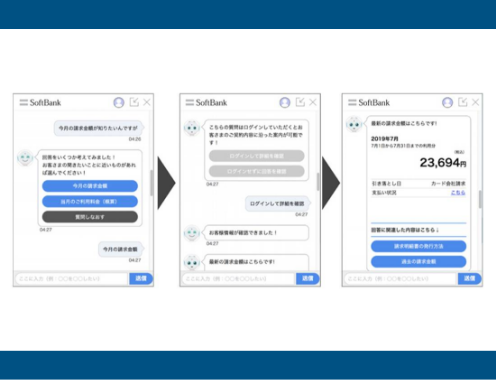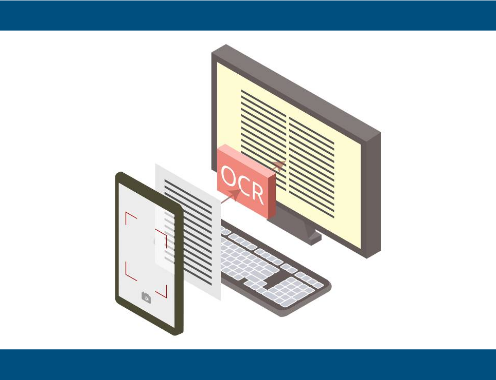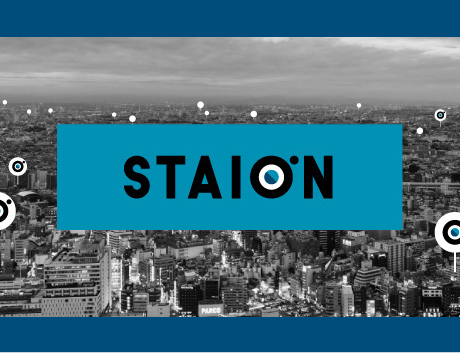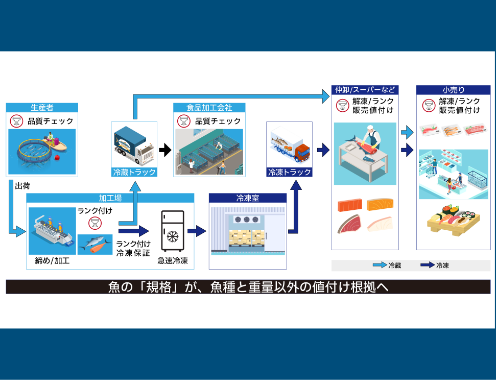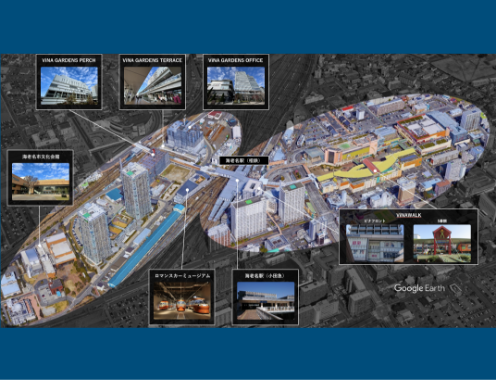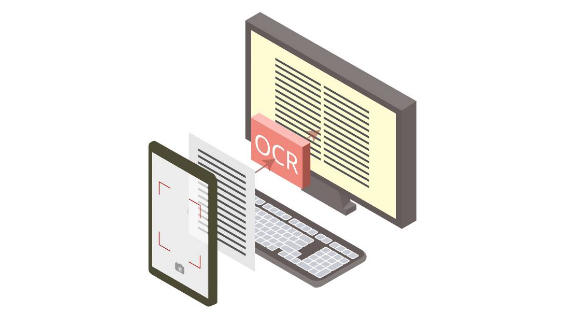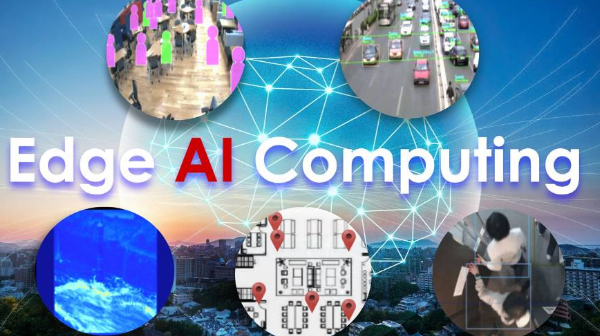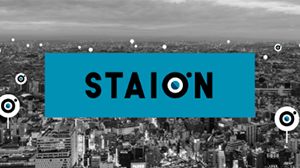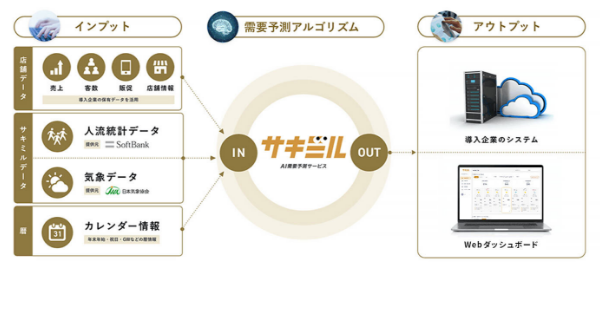

What does SoftBank mean
by “next-generation social infrastructure”?
-
A future of widespread AI use will bring huge growth in data volumes
The future is expected to bring explosive growth in computing requirements for processing data, with a more than 2,000-fold expansion anticipated by 2050. In a society where all sorts of different devices get connected to the Internet and AI is utilized globally, high-speed processing of vast amounts of data in realtime will be essential. Unfortunately, the communication infrastructure of today is not equipped to cope with this future. Bringing about a future of relentless advancement in AI will need a more robust “next-generation social infrastructure” that can support this progress.

-
New platforms for a society
where AI plays an integral roleNext-generation social infrastructure represents a transformation in the very structure of existing telecommunications, delivering an entirely new form of digital infrastructure that leverages the power of AI through dramatic improvements in computational capacity. Whereas data processing right now is largely centralized in urban locations, processing speeds will be increased enormously by adopting a wider geographical spread. Locating in regions where renewable energy is available will also help society achieve decarbonization. These new platforms with enhanced computational capacity will expand the potential for AI and help to bring about a sustainable society.

-
Building infrastructure
that changes the worldTo create a society in which AI has an integral role, we need to know what AI is capable of and how it is evolving. This is why SoftBank places such importance on gaining a breadth of knowledge of AI and on using it widely. By becoming the company that understands AI better than anyone, we will build infrastructure that changes the world. We are also developing revolutionary AI technologies for use on this infrastructure. Taking these ambitions to heart, SoftBank is putting its utmost effort into this endeavor.



Future lifestyles made possible
by next-generation social infrastructure
Here, we take a three-fold approach to considering what life with AI will be like in the near future, addressing the question in terms of peoples' AI-incorporated lives as well as the soft and hard infrastructure respectively that will support this.
SoftBank is developing and implementing a variety of technologies aimed at delivering this next generation of social infrastructure, including homegrown generative AI and AI-RAN, and a platform that integrates HPC and quantum computing.

Disaster preparedness
Preventing a complete loss of services, no matter what form a disaster takes
With next-generation social infrastructure, data processing and other such capabilities will not be lost when a large city is hit by a major disaster, for example. Whereas data centers are currently only located in major cities such as Tokyo or Osaka, also establishing them in regional locations will allow people everywhere to continue to go about their lives no matter what happens. Even in societies where the integral role of AI brings much higher data processing loads, having regionally distributed data centers will bring reassurance to people in their daily lives.
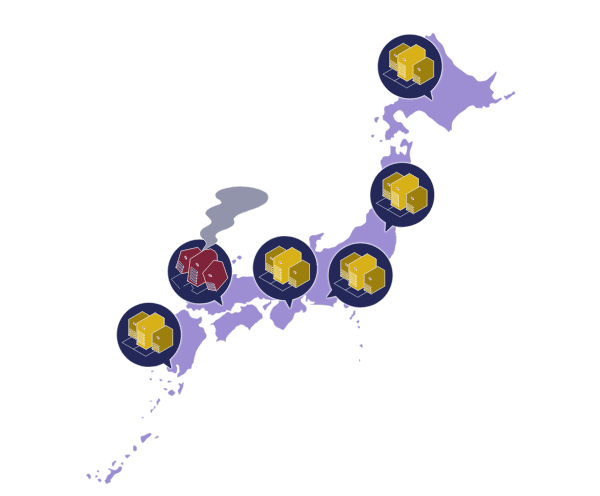

Healthcare
Putting AI alongside doctors to expand their capabilities
AI offers huge potential for transforming healthcare in Japan. Training generative AI with advanced field-specific expertise, for example, will enable doctors to deliver high-quality healthcare based on judgements that factor in a wide range of considerations. When utilized in locations that lack specialists in a particular field, AI can eliminate regional healthcare disparities through its use to obtain the most likely conclusion based on broad-ranging data. This should improve healthcare standards dramatically in both urban and rural settings, making patients feel more confident about receiving a diagnosis. It may be that AI holds the key to the future of medicine.
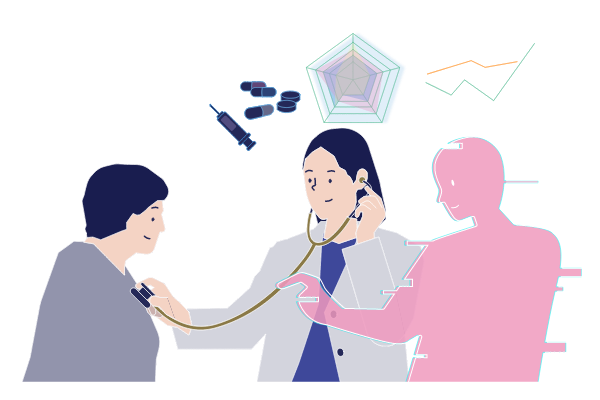

Logistics
Building logistics systems that will last for a century or more
Next-generation social infrastructure can help the logistics industry overcome the major challenges it faces. It can manage inventory with zero waste by coordinating diverse data sets on things like separately managed retail and manufacture operations. It can provide sustainable distribution that is stress-free for both corporates and individuals. It may even allow for fully automatic deliveries by automating the entire distribution chain. As well as ensuring maximized efficiency, the future of logistics could well give rise to entirely new lifestyles.


Education
A classroom of 30 teachers for 30 pupils
Personalization is one of the strengths of generative AI. It can optimize learning to suit each individual, even in classes with pupils at very different stages of educational attainment. Whereas it has been common practice to tailor lessons to suit pupils falling behind, AI opens up possibilities such as providing learning opportunities for those who are more advanced. If a pupil has their heart set on becoming a scientist or a business-person, for example, lessons could be created especially for them. It may even turn out to be possible to create a situation where each and every pupil has an AI teacher by their side. Given differences in language and culture, it likewise seems clear that a “homegrown generative AI” will have a major role to play, not only in subjects like math and science, but especially in Japan-specific education such as Japanese and Japanese history.
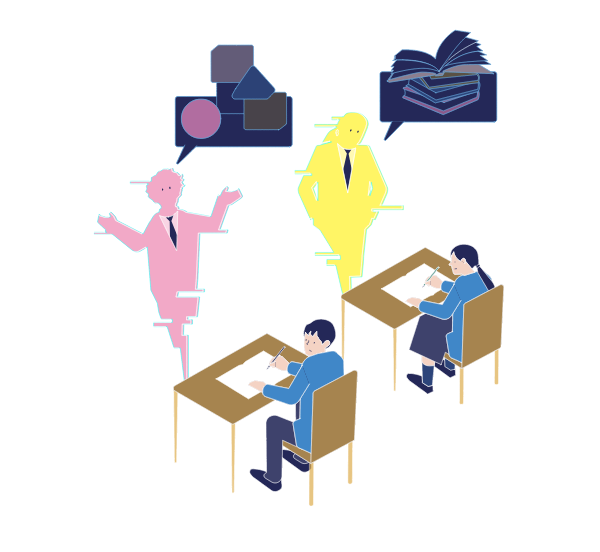

Transportation
From a travelling space to an enriching living space
Next-generation social infrastructure can make ultra-futuristic forms of transportation a reality. If the road itself is able to connect vehicles with their surroundings, it can inform vehicles about their blind spots or cause them to stop automatically if a child runs out onto the street. Congestion will be eliminated by coordinating the movements of vehicles on highways. The potential now exists to create such a safe and reliable transportation infrastructure. Once fully autonomous driving becomes a practical reality through the use of communications and AI, it may well transform the very concept of travel, allowing people to telework or watch videos while being driven in their vehicles. JChanges in transportation could bring dramatic changes in people's daily lives.
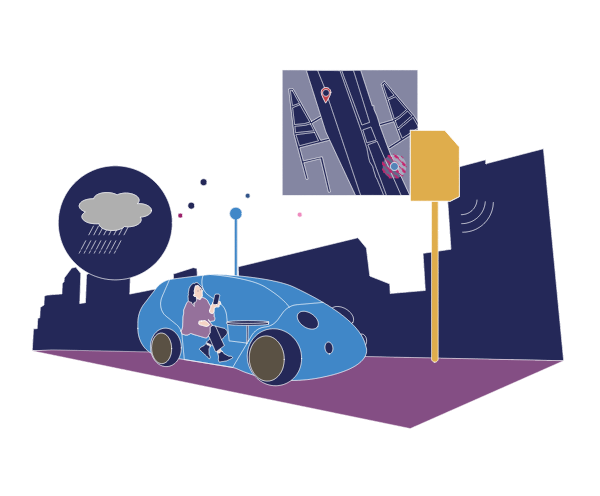

Manufacturing
AI as your factory workmate
With so many industries suffering from workforce shortages, the arrival of AI is set to transform the manufacturing workplace. Robots have already made a major contribution to productivity by taking over human tasks, operating in accordance with the explicit instructions in their programs. With next-generation social infrastructure, however, AI capabilities will extend to advising on how to optimize production sites and timings or suggesting how to make more efficient production lines. This will be done by integrating information from diverse sources and using it for learning, including the operating conditions of production machinery and demand predictions from around the country. A world in which AIs number among your workmates may not be that far away.
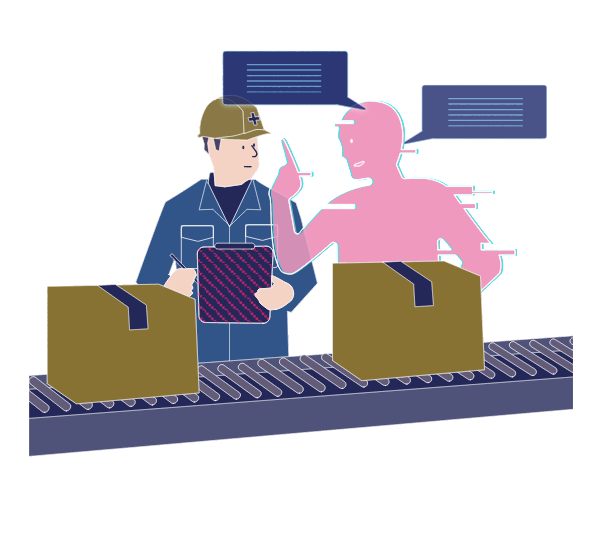

Entertainment
The ultimate entertainment experience, created just for you
A world with AI will also transform entertainment experiences. It will become routine for personalized AIs to deliver entertainment that is customized to your personal tastes. You might even be able to enjoy playing with others using new art, games, characters, or stories devised by generative AI. AI may well offer infinite scope for expansion in how people enjoy entertainment.


Building AI (Building homegrown generative AI)
A large language model (LLM) is being developed in Japan with a focus on the Japanese language. With a view to achieving a strong affinity for the culture, history, and commercial practices of Japan, and with application in a variety of highly specialized fields such as healthcare, law, and finance, the goal is to provide safe and reliable generative AI services that will be the most widely used in the country. Rather than serving only as a substitute for specific tasks, the intention is to create AI that can serve as a partner in building a better society. The research and development work also encompasses the processes associated with bringing the AI into practical use.

Control of distributed computing platform (Ultra-distributed computing platform)
This is a foundational technology for societies where AI plays an integral role. It meets the need for realtime performance, securely integrating the vast amounts of data held by industry, academia, and government with automatic optimization of its processing on geographically distributed systems. It can also make public environments better for the people who use them. One example is the collection and processing of data from autonomous vehicles on highways to eliminate accidents and congestion. Another is the collection and collation of data on the movements of people in buildings and their neighborhoods so that those buildings can achieve energy efficiency autonomously while still being pleasant places for people to spend time.

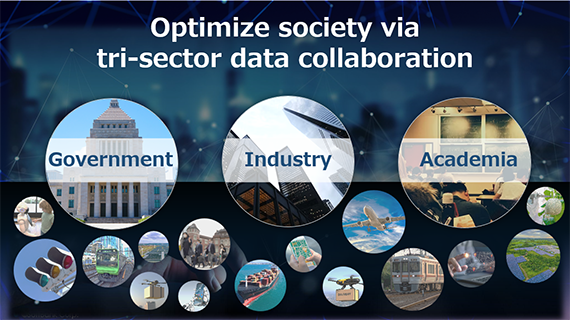
AI-enhanced communication networks (AI-RAN)
This technology uses AI to manage packet congestion caused by circuit overloading of the sort that tends to occur at live events or during disasters. It optimizes the network automatically by having base stations coordinate with one another autonomously. This use of AI to control base station operation delivers energy efficiency by saving on power consumption when not in use. Similarly, more advanced networks like Beyond 5G or 6G can be implemented on present-day 5G networks by incorporating AI into low-latency multi-access edge computing (MEC).


Boosting AI processing capacity
Distributed AI data centers
Enhancing resilience through geographic distribution
This sets a new standard for data centers capable of handling heavier processing workloads in anticipation of when AI becomes an integral part of our lives, also enhancing resilience by relocating data processing and power consumption that in the past have been concentrated in metropolitan areas. It combines “core brains” located in major cities that handle large-scale computational processing with “regional brain” computing platforms in the regions. This delivers geographically distributed data processing, with nationwide use of MEC to deliver low latency from sites close to users.


Processing of data with low environmental impact
Whereas power consumption in the past has been concentrated in cities, green data centers spread this consumption to the regions, enabling the use of 100% locally produced renewable energy. Here, reliability of supply is achieved by means of energy sources such as hydrogen electricity generation and batteries with a low environmental impact.

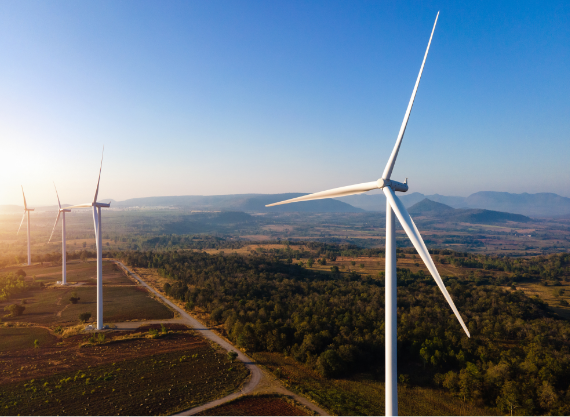
Integrated HPC and quantum computing platform
Japan top-level AI computing platform for accelerating progress in AI
This is a Japan top-level computing platform for the development of generative AI*, a technology that has attracted considerable worldwide attention in recent years. Boasting a high level of computing capacity that has been optimized for processing large volumes of data, the platform is being utilized to develop a Japanese large language models (LLMs) designed specifically for the Japanese language. Rather than being limited to SoftBank and its group companies, the platform is contributing to the rapid growth of the entire Japanese AI industry by providing universities, research institutions, and companies with a cloud-based computing platform.

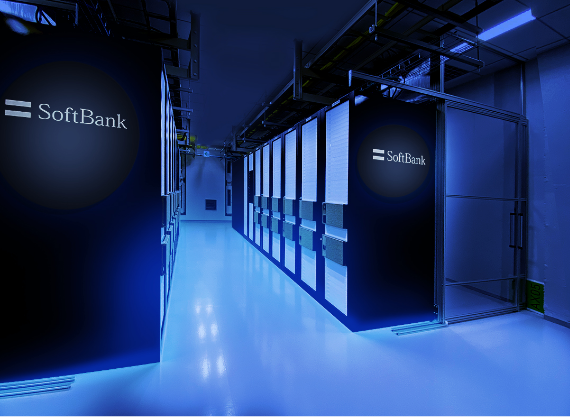
* A top-level computing platform in Japan for LLM training. As determined by SoftBank based on publicly available information as of October 31, 2023.
World-changing high-performance computational software
This software integrates quantum computing with supercomputers. While they have yet to enter common use, quantum computers have the potential to deliver dramatic increases in the speed of information processing and our goal is to achieve practical quantum computing by combining them with supercomputers. If successful, this technology will enable computations in previously intractable applications, not only significantly increasing capacity for information processing but also delivering superior power consumption.


Expanding possibilities
for AI across society
SoftBank is seeking to utilize AI to resolve society-wide challenges, engaging in research and development that applies AI to a variety of different industries. These examples show how AI can do things that have never been done before.
Advances in communications technology
through integration with AI
We are actively engaged both in the research and development of foundational technologies that underpin advances in telecommunications and in work on the standardization of research outcomes that seeks to deliver benefits both in Japan and farther afield.
-
5G


Along with further expanding coverage and improving the quality of 5G, a technology that has brought great progress to both industry and services, we are also undertaking investigations and other activities aimed at enhancing its functionality.
Learn more -
NTN


A network based in the sky can provide access outside the coverage area of terrestrial mobile communications. As well as benefiting general users, this is also making a major contribution to industries accelerating their digital transformation.
Learn more -
Beyond 5G/6G


We are striving to expand and improve our communications business by conducting a wide variety of research and development activities that look ahead to Beyond 5G/6G and its potential to outstrip the communication performance of 5G.
Learn more -
Communications platform technology


We are actively engaged both in the research and development of foundational technologies that underpin advances in telecommunications and in work on the standardization of research outcomes that seek to deliver benefits both in Japan and farther afield.
Learn more
R&D that moves
the world forward
The SoftBank Research Institute of Advanced Technology was newly launched in April 2022 as an organization that engages in research and development aimed at the practical realization of new technologies. Technology has always been a driver of societal change. However, a sole focus on researching technology leaves no room to explore what will become commonplace in the future. As one of the driving factors behind society, we are using technology to move the world forward and build the society of the future.

-
HAPS

High Altitude Platform Station (HAPS) is a new form of communications infrastructure that uses airborne base stations to create a world in which people everywhere and all sorts of devices can connect with one another. Follow the link below to learn more about our research and development of HAPS for the delivery of wide-ranging, fast, high-quality communications from the stratosphere.
Learn more -
Autonomous driving

New initiatives in mobility such as mobility-as-a-service (MaaS) and autonomous driving have attracted attention as solutions to the societal challenges related to transportation. Visit the link below to learn more about the R&D we are doing to build the transportation infrastructure of the future, looking ahead to how we can encourage a greater public uptake of autonomous driving services.
Learn more -
Next-Generation Battery

Higher performance batteries will be essential to the practical realization of next-generation technologies exemplified by HAPS, drones, and flying vehicles. Our work focuses on the next-generation batteries that underpin these hopes. Follow the link below to learn more about this R&D.
Learn more
